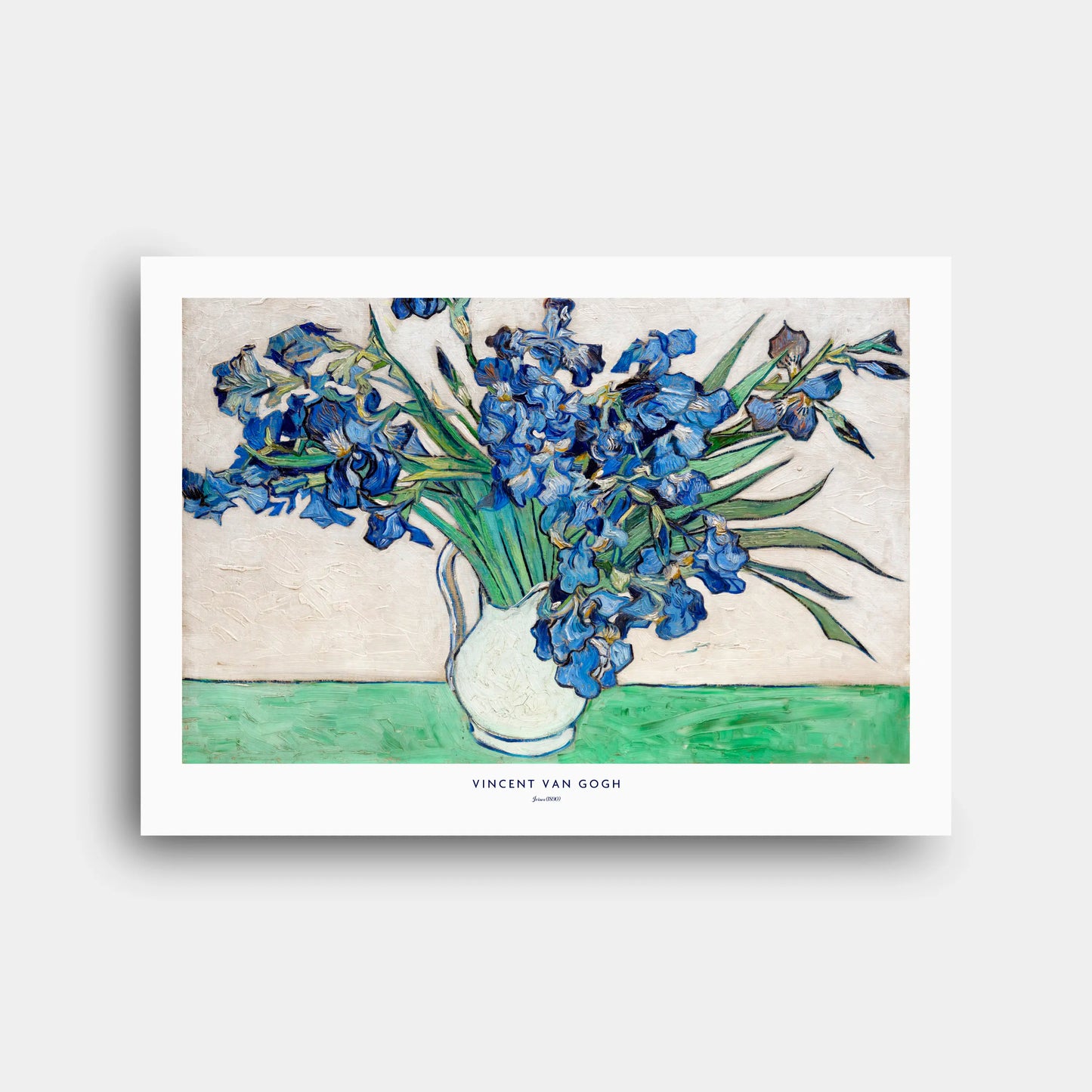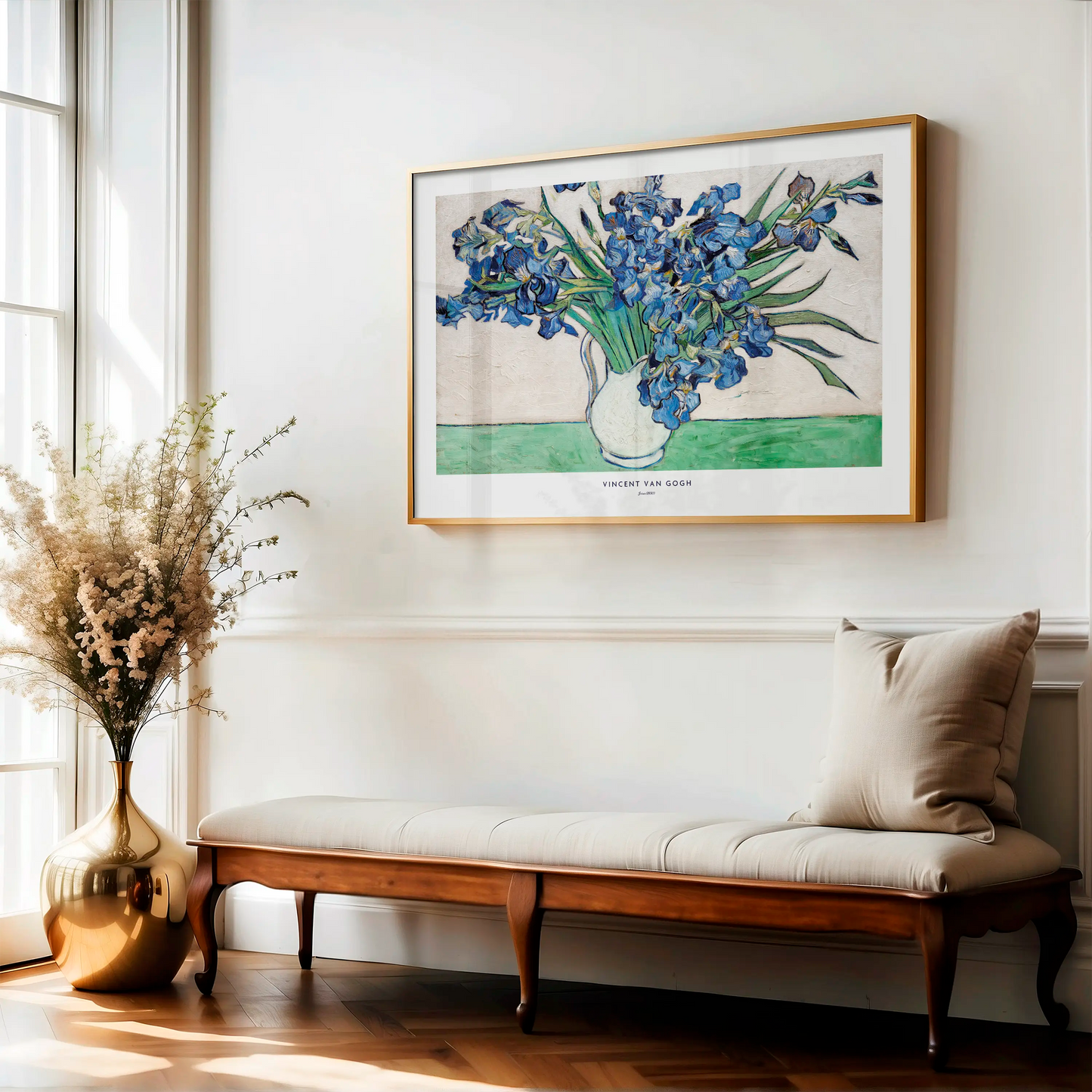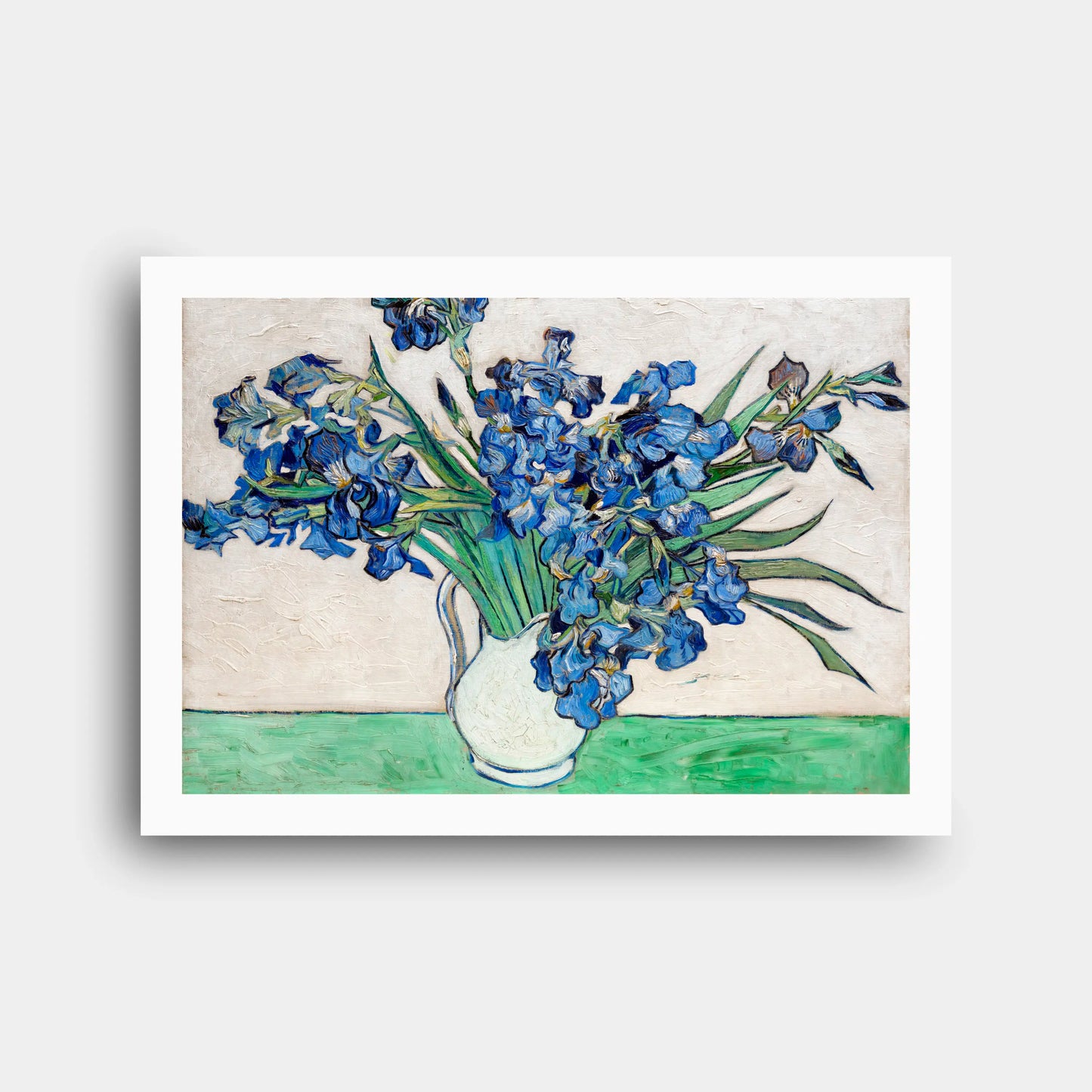Vincent van Gogh - Irises (1890) - Paper Poster N196
Vincent van Gogh - Irises (1890) - Paper Poster N196
Couldn't load pickup availability
Share
Paper Poster | Canvas Print | Digital File
1. Historical and Artistic Context
Vincent van Gogh painted "Irises" in May 1890 while recovering at the Saint-Paul-de-Mausole asylum in Saint-Rémy-de-Provence. This was during the final weeks of his stay before he left for Auvers-sur-Oise. Despite his fragile mental state, Van Gogh experienced a surge of creativity, producing a series of floral still lifes, including two irises and two roses. These works were intended as a decorative ensemble and a final tribute to the natural beauty of Provence. "Irises" stands as a reflection of Van Gogh’s renewed optimism and desire to reestablish his place in the art world.
2. Technical and Stylistic Analysis
"Irises" features a vibrant bouquet of blue-violet flowers arranged in a white pitcher, set against a pale pink (now faded) background and green tabletop. The horizontal canvas allows the composition to stretch naturally, creating a sense of movement. Each iris is painted uniquely, with flowing petals and lively contours. Van Gogh’s style here is deeply influenced by Japanese prints—emphasizing bold outlines, flat color areas, and decorative rhythm. The visual harmony between greens, purples, and soft pinks gives the painting a serene, balanced atmosphere.
3. Symbolism and Interpretation
Although Van Gogh did not explain symbolic meanings, "Irises" is often interpreted as a meditation on renewal and healing. Painted during a period of personal recovery, the irises symbolize vitality and the hope of spring. Their individuality—no two flowers are alike—may reflect Van Gogh’s respect for uniqueness in nature and people. The calm and orderly arrangement of the bouquet contrasts with the turbulence of his life, suggesting that painting nature offered him emotional refuge and stability.
4. Technique and Materials
Van Gogh used oil on canvas and applied paint in thick impasto, creating a richly textured surface. The petals were rendered with dynamic brushstrokes and outlined in darker hues for clarity and emphasis. The background was originally a soft pink achieved with red lake pigments, which have since faded, turning the background almost white. The vase, likely his own washbasin pitcher, was painted with subtle shading, anchoring the composition. Van Gogh’s material choices and confident technique allowed him to express movement and emotion through every stroke.
5. Cultural Impact
"Irises" has become one of Van Gogh’s most beloved and recognizable works, widely reproduced in prints, merchandise, and educational media. It has influenced artists, designers, and even fashion houses like Yves Saint Laurent, who created a jacket inspired by its forms and colors. The painting is emblematic of Van Gogh’s ability to find beauty in everyday subjects and has played a major role in his enduring popularity. It remains a symbol of resilience, creativity, and emotional expression through art.
6. Critical Reception and Scholarly Interpretations
Critics and scholars have consistently praised "Irises" for its color harmony, expressive form, and compositional elegance. Early 20th-century reviews highlighted its freshness and vitality. Modern scholarship explores its connection to Van Gogh’s mental health, color theory, and Japanese influence. Recent technical studies have focused on pigment fading and conservation. Overall, it is considered a masterpiece of late Post-Impressionism and a profound expression of the artist’s inner life and artistic evolution.
7. Museum, Provenance and Exhibition History
"Irises" is part of The Metropolitan Museum of Art's permanent collection, gifted in 1958 by philanthropist Adele R. Levy. Originally in the possession of Van Gogh’s family, it later passed through notable collectors like Paul Cassirer and Paul Rosenberg. The painting has been exhibited widely, including in the Met’s 2015 "Irises and Roses" exhibition that reunited all four floral works from Van Gogh’s final still-life series. Its display history has contributed to its iconic status in the canon of Western art.
8. Interesting Facts
1. Van Gogh painted this while recovering from a severe mental health relapse.
2. The pink background has faded due to the instability of red lake pigment.
3. The irises were painted from life in a white washbasin pitcher.
4. Each iris is depicted uniquely, avoiding repetition.
5. The painting was originally part of a four-part floral series.
6. Its style was heavily influenced by Japanese woodblock prints.
7. The Met’s version is in horizontal format; a vertical iris painting is in Amsterdam.
8. It was once owned by the influential Mendelssohn family in Berlin.
9. A digitally restored version shows the original pink background.
10. It inspired a sequined haute couture jacket by Yves Saint Laurent in 1988.
9. Conclusion
"Irises" encapsulates Van Gogh’s unique ability to transform ordinary subjects into emotionally resonant works of art. Painted during a crucial moment of transition, it embodies themes of hope, individuality, and beauty. Through expressive brushwork, thoughtful color use, and compositional elegance, the painting remains a timeless symbol of Van Gogh’s vision and resilience. As both a personal and artistic statement, it continues to captivate and inspire generations of viewers around the world.











